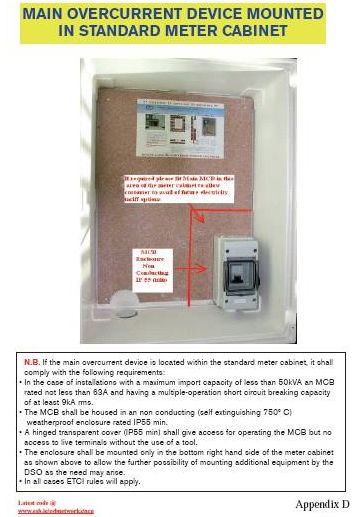September 2009 marks the date when the fourth edition of ET101 replaces its predecessor. The need for the new edition comes for a number of reasons one of them being that the third edition has been in existence since 2000 and during the intervening period has had two amendments. CENELEC has also carried out a major restructuring of the international rules and as is the case for all member countries Ireland is obliged to implement these requirements. During the period 2000 – 2009 there have been significant modifications to the Building Regulations and the HSA Regulations these changes combined with others in building construction have been the main reason for requiring this new edition.

At a first glance one would be forgiven for thinking that there was little change in the new edition. However given a closer look it becomes obvious that there are some important changes which are intended to have a considerable impact on improved safety standards of electrical installations in Ireland. Surprisingly some of the “rule changes” that are getting the most notice were originally contained in the second amendment published in September 2005 and were incorporated in the fourth edition without modification! We will discuss these in a later article.
A summary of the major changes reads as follows.. Chapter 41: Protection against shock
- The section numbering system has been changed.
- The measures of protection against direct contact have been relocated to the Annexes 41A and 41B.
Chapter 42: Protection against fire and harmful thermal effects; contains the former section 482 from the third addition. The reader will remember that this section contained the preventative measures required for areas where there is an additional potential for fire hazard (hay-barns, textile stores, etc).
Chapter 43: Protection against over-current; contains a new option for the electrical contractor to locate the installation main isolation and over-current device within a designated location in the standard outside meter enclosure. It must be pointed out that it is not a mandatory requirement to fit this device “only” within the meter enclosure. Rule 430.4 offers two ways of complying with the clause. Either fitting the device (i) at the main supply point in accordance with 533.3.5; or (ii) within 3m of the supply point provided the conductors upstream of the device:
- are installed in such a manner as to reduce the risk of a short circuit to a minimum e.g. by suitable mechanical protection, and
- are installed in such a manner as to reduce to a minimum the risk of fire or danger to persons e.g. by ensuring they are not placed near combustible material, and
- have no branch connections.
If the electrical contractor opts for installing the device in the standard enclosure it must be fitted as shown in the ESB Networks National Code of Practice at Customer Interface Appendix D. This information is available at www.esb.ie/esbnetworks/ncp . It is most important that electrical contractors are aware of and fully understand these requirements. Failure to comply with these instructions will result in the electrical installation not being connected this may mean additional costs ( including revisit fees) and a request for re-certification .
In next months issue we will continue our look at some more of new requirements in the Rules including the important topic of protection against voltage and electro magnetic disturbances contained in Chapter 44, Changes in Chapter 46: Isolation and Switching etc.